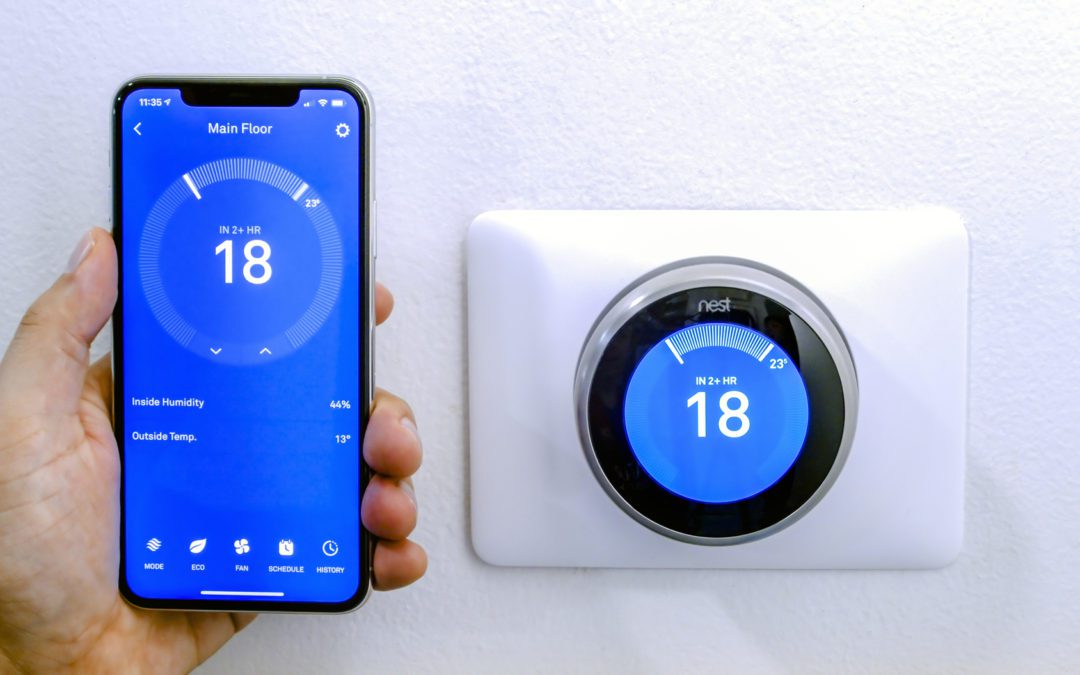Have you recently upgraded your HVAC system to a brand new setup? If so, you may have had the option to also upgrade to a “smart” thermostat device, such as the Google Nest. Other homeowners simply want to embrace the benefits of the “smart home” trend and choose to upgrade their old thermostat unit directly. Paired best with modern units, these thermostats can help you save money and enjoy a more efficient, effective way to use your heating and cooling systems. With that said, they are quite different from your regular thermostat models, and some can find them tricky to operate. To make setup and enjoyment of your new device easier, check out these quick Google Nest tips that will have you mastering your system in no time.
Read the Manual for Basic Google Nest Tips
It might seem obvious, but this is the best place to begin. Most of your immediate questions about the Nest will be answered in the manual supplied with your device. Read this manual thoroughly and refer to the online documentation as well. If you had a professional installation performed, your Nest should already have the basic setup steps completed for you. Get familiar with the booklet’s information, so when you need to know how to do something involving the device settings, you won’t find yourself guessing.
You Don’t Have to Rely on Nest’s Learning Functionality
One of the most advertised aspects of the Nest thermostat is that it learns from your habits and patterns to create a customized heating or cooling schedule. Ideally, this will lead to lower energy bills and more efficient unit operation. However, the schedule it learns might not be the schedule you keep all the time. If your days or weeks vary significantly, you may wish to disable the learning functionality and instead program your own schedule like a traditional thermostat. To turn off the schedule learning, open your Nest app, visit the settings, and disable the Auto Scheduler.
Use Home/Away Mode Paired With Your Phone
There’s even more good functionality buried inside the Nest thermostat app, too. Home/Away mode is a unique system that applies your phone’s GPS location functionality to “talk” to the thermostat. When you leave the house to run errands or go to work, your thermostat can “see” that you’re away from home. It then adjusts the temperature accordingly to save you money. When it detects that you’re on the way home or walking in the door, it kicks the air back on to cool you down.
Set a PIN to Protect Your Settings
Do you live with housemates who can’t help themselves when it comes to dialing the temperature down to Arctic levels of cooling? Maybe you have children who are too curious for their own good. No matter the security scenario, the Nest thermostat lets you set a PIN to lock down the settings so only you can make changes to settings such as scheduling and current temperature settings.
Discover the Convenience of Voice-Controlled Cooling
Do you have the Google Nest speaker or a similar smart speaker device? You can connect them to the network with your Nest thermostat and use them to control your system from anywhere. Sitting on the couch enjoying a movie and don’t want to get up to make the house more comfortable? “OK, Google, set the air to 68 degrees.” A simple command is all it takes!
The Nest Has a Special Mode to Deal With Sunny Conditions
Not every thermostat can be installed in the best possible spot, although the Energy Department recommends keeping thermostats away from natural light sources. Does your thermostat reside in a space that receives direct sunlight during the day? Such exposure could artificially heat the temperature sensor and cause your system to run for too long. With the Nest, you can enable the Sunblock feature. The device will automatically detect when it’s in sunlight and adjust its sensors accordingly.
Control Your Humidity From Your Thermostat
Open your Nest app and look through your cooling settings, and you’ll find an option called “Cool to Dry.” As we know, the refrigeration cycle used in air conditioners also works to remove humidity from the air. Your Nest can control your AC unit with advanced commands to run it long enough to drop the humidity in your house. With its built-in hygrometer, it knows when to cut off the system again.
Need Help or More Google Nest Tips? Thermostat Not Working? Call for Professional Help
Sometimes, even the savviest users will run into problems that they can’t solve. If you’re still having trouble setting up your device even with these Google Nest tips, consider contacting the provider that installed the device or another reputable HVAC contractor in your area. If your Nest has stopped working or displays frequent error messages, contact the device manufacturer’s support line or ask if your contractor of choice has experience with troubleshooting. With some practice and a proper installation, your Nest can make managing your HVAC systems and energy bills simpler than ever.

